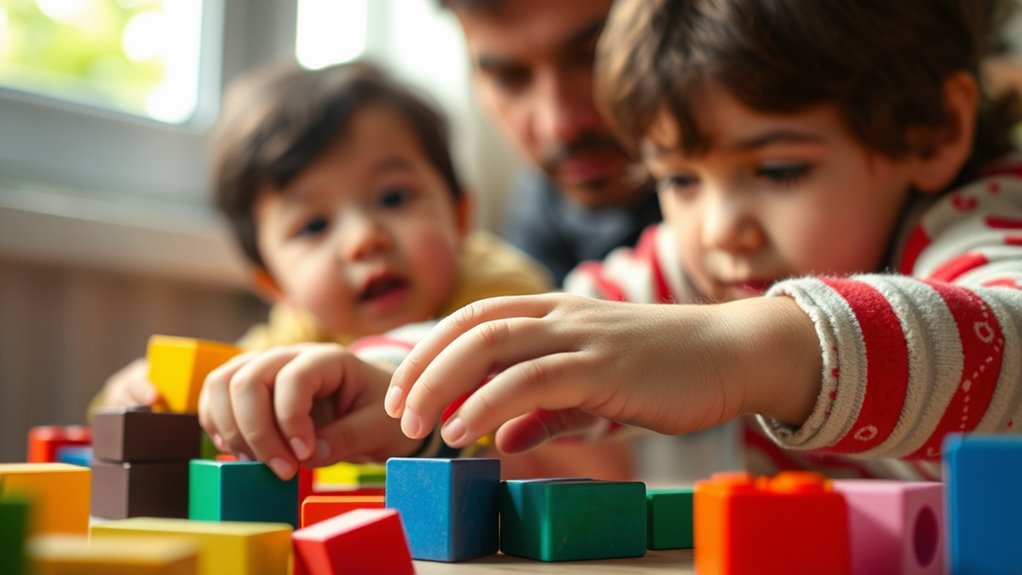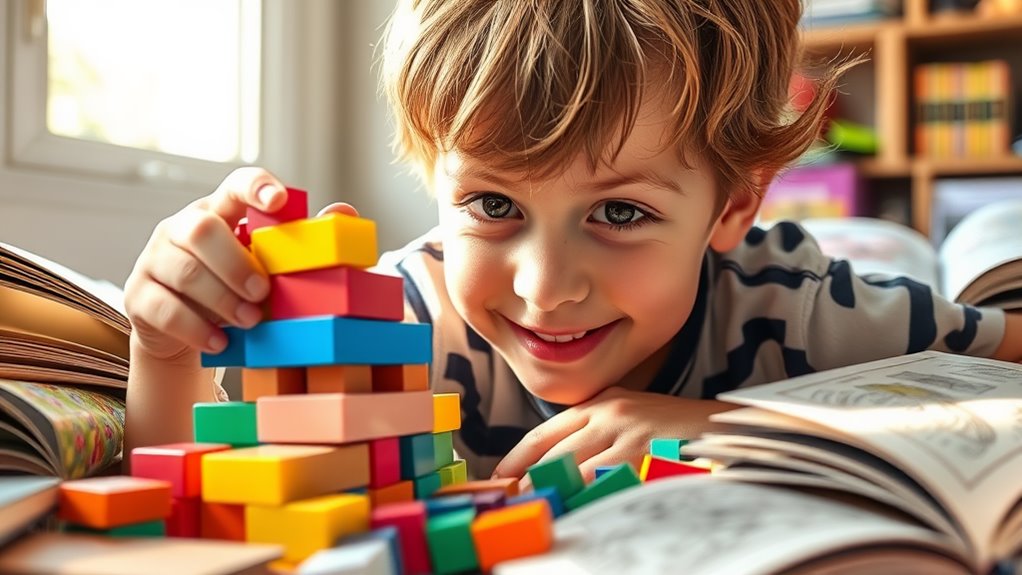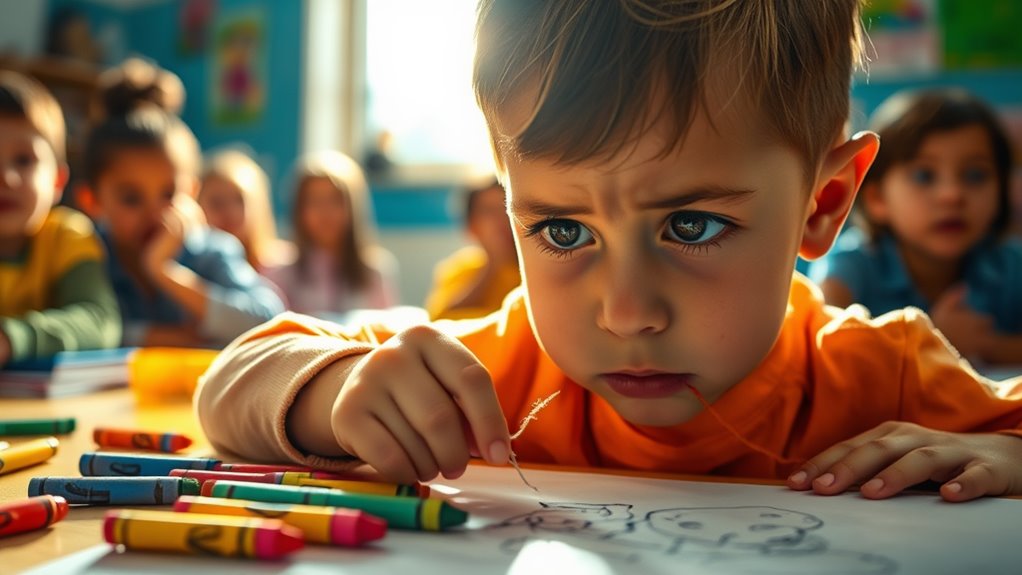How to Help Your Child Overcome Social Anxiety
To help your child overcome social anxiety, start by creating a supportive environment. Encourage open communication, so they feel safe sharing their worries. Acknowledge their feelings and validate their experiences. Gradually expose them to social situations by starting small, like inviting a friend over. Teach coping strategies, such as deep breathing and role-playing, to build their confidence. If anxiety persists, consider seeking professional help through tailored therapies or support groups. Each step can empower your child and improve their social skills. Discover more ways to support their journey to overcoming anxiety in the next insights.
Key Takeaways
- Foster open communication by creating a safe space for your child to express their feelings and concerns about social situations.
- Practice gradual exposure by starting with small social interactions and slowly increasing the intensity of these experiences over time.
- Teach coping strategies like mindfulness techniques and deep breathing exercises to help your child manage anxiety in social settings.
- Encourage role-playing scenarios to build confidence and prepare your child for real-life social interactions.
- Seek professional help if needed, considering therapy options like cognitive-behavioral therapy and support groups for tailored guidance.
Understand Social Anxiety
What does social anxiety really mean for your child? It’s more than just shyness or a fear of public speaking; it can manifest as intense fear or worry in social situations, making everyday interactions seem daunting.
Understanding this condition starts with symptom recognition. You might notice your child avoiding social events, experiencing physical symptoms like sweating or trembling, or expressing irrational fears about being judged. These signs are crucial in identifying the struggles your child faces.
Creating a supportive environment is essential. Building support networks, whether through family, friends, or professionals, can provide your child with the reassurance they need. Engaging with others who understand social anxiety can help them feel less isolated.
Encourage connections with peers who can relate to their experiences, as this creates a sense of belonging and safety.
Know that social anxiety isn’t a character flaw; it’s a challenge that many kids face. By recognizing the symptoms and fostering supportive relationships, you’re already taking significant steps to help your child navigate their feelings.
Understanding social anxiety is the first step toward helping your child find ways to cope and thrive in social settings.
Encourage Open Communication
Open communication serves as a vital bridge between you and your child when addressing social anxiety.
It’s essential to create a supportive environment where your child feels safe to express their thoughts and feelings. Start by encouraging them to share their experiences, no matter how small they may seem. When they do open up, practice active listening—show genuine interest in what they’re saying, and avoid interrupting. This not only validates their feelings but also fosters trust.
Make sure to ask open-ended questions that invite further discussion, such as, “What makes you feel anxious when you’re with others?” This helps your child articulate their emotions and understand them better. Acknowledge their feelings without judgment, reinforcing that it’s okay to feel anxious.
Additionally, reassure your child that you’re there to support them through their struggles. Remind them they’re not alone in facing these challenges.
Practice Gradual Exposure
Building on that foundation of open communication, practicing gradual exposure can be an effective way to help your child confront social anxiety. This technique involves gently introducing your child to social situations, allowing them to build confidence over time.
Start small and gradually increase the intensity of the situations. Here are some steps to consider:
- Begin with familiar settings, like inviting a friend over.
- Use role playing scenarios to simulate social interactions in a safe space.
- Gradually introduce your child to larger groups or new environments.
Teach Coping Strategies
Often, teaching your child effective coping strategies can make a significant difference in managing social anxiety. Start by introducing mindfulness techniques, which can help them stay present and calm in social situations. Encourage practices like deep breathing, grounding exercises, or guided imagery to reduce anxiety. These techniques can empower your child to take control of their feelings when they start to feel overwhelmed.
Another useful approach is to engage in role-playing scenarios. This lets your child practice social interactions in a safe environment, helping them build confidence. You can take turns playing different roles, such as meeting a new classmate or speaking up in a group.
Discuss what went well and what could be improved after each practice session, reinforcing positive behaviors.
Additionally, encourage your child to identify and articulate their feelings. By understanding what triggers their anxiety, they can better prepare themselves and apply the coping strategies you’ve taught them.
Seek Professional Help
Seeking professional help can be a crucial step in addressing your child’s social anxiety. It’s often challenging for parents to navigate this issue alone, and a professional can provide the guidance you need.
Here are some ways professional help can make a difference:
- Tailored therapy options that fit your child’s specific needs
- Access to support groups where your child can connect with peers
- Strategies that parents can use to reinforce progress at home
Therapists may recommend various therapy options, such as cognitive-behavioral therapy (CBT), which has been shown to be effective in treating social anxiety.
These sessions can help your child develop coping mechanisms and challenge irrational fears. Additionally, support groups can create a safe environment where your child interacts with others facing similar challenges, reducing feelings of isolation.
Don’t hesitate to reach out to a mental health professional who specializes in children’s anxiety. They can assess your child’s situation and recommend the best course of action.
Frequently Asked Questions
What Are the Signs of Social Anxiety in Children?
You might notice your child avoiding social situations, showing nervousness, or having trouble speaking up. Recognizing these signs early can lead to effective parental support and intervention, helping them navigate their feelings and build confidence.
How Can I Differentiate Between Shyness and Social Anxiety?
To differentiate between shyness and social anxiety, look for shyness traits like quietness versus anxiety symptoms such as excessive worry, fear of judgment, or physical signs like sweating. Understanding these differences can guide your approach effectively.
Are There Specific Activities to Avoid With an Anxious Child?
In today’s fast-paced world, it’s wise to avoid group activities and crowded places that might overwhelm your child. Instead, focus on smaller, manageable settings where they can feel safe and gradually build confidence.
How Long Does It Typically Take to Overcome Social Anxiety?
It typically takes several months to years to overcome social anxiety, depending on treatment duration and the therapy methods used. Consistency and support can significantly influence how quickly progress is made in overcoming these challenges.
Can Social Anxiety Affect Academic Performance in Children?
Yes, social anxiety can significantly affect your child’s academic performance. The emotional distress it causes may lead to difficulty concentrating, participating in class, or forming relationships, ultimately resulting in a negative academic impact.





